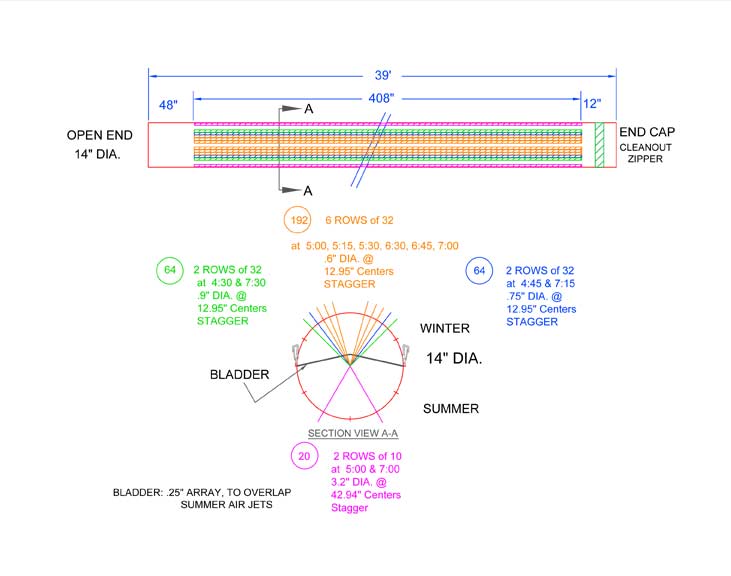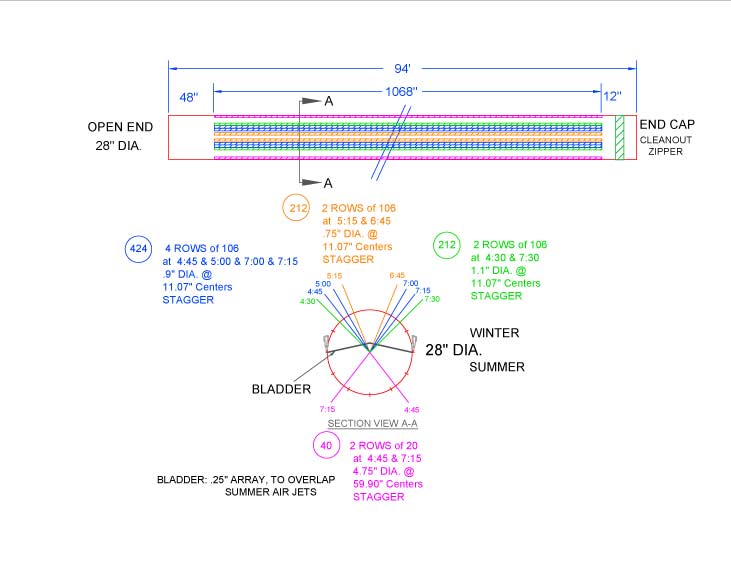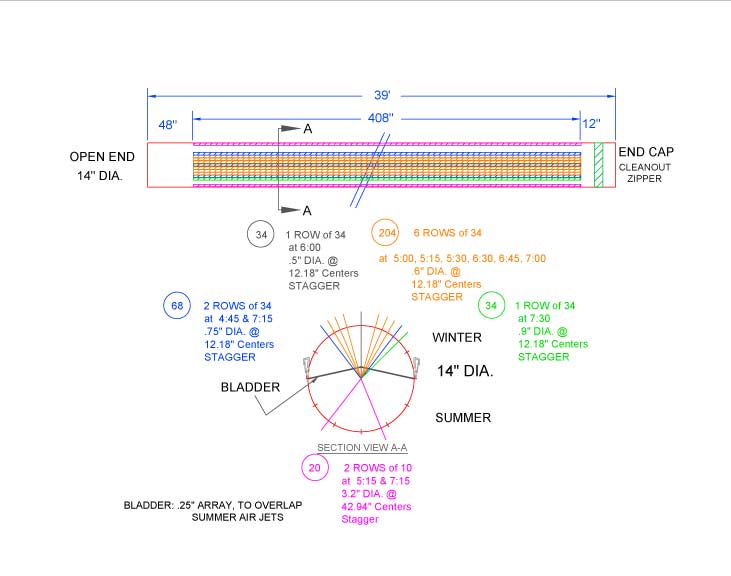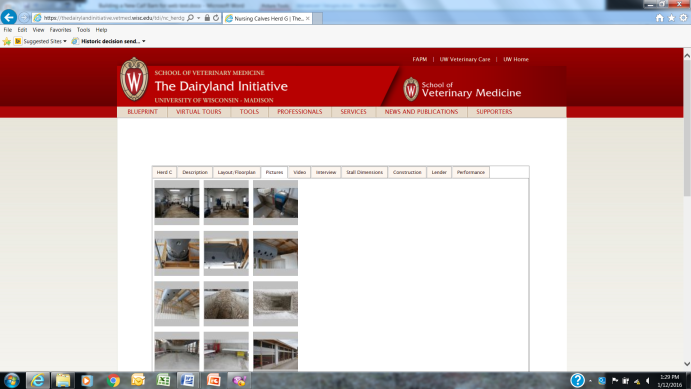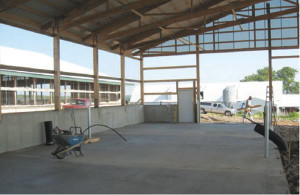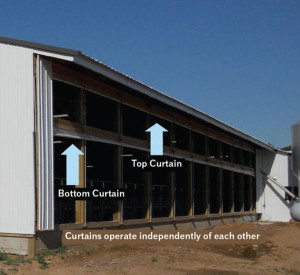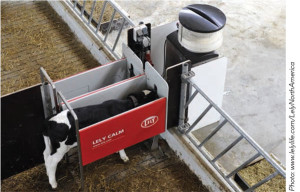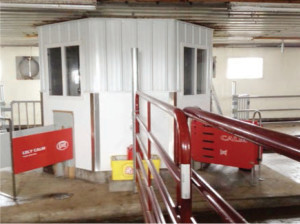Are You Building A New Calf Barn?
Calf Barn
Check out the Dairyland Initiative website for more calf barn photos, blueprints, designs, virtual barn tours, video testimonials and more. A wealth of knowledge and a MUST SEE before pouring any concrete.
Design and Build for Excellent Air Quality
Spring is an excellent time to plan your upcoming construction projects. Across the United States, more and more farms are investing in new calf raising facilities. Some of the more common calf barn designs incorporate naturally ventilated, curtain sidewall barns. Whether looking at a new barn for an automated calf feeder or individual pens, there are many aspects that need to be considered when designing the layout. Stocking density and animal flow, bedding and manure cleanout, feed delivery considerations, electrical and plumbing needs all should be evaluated.
When thinking about the design of the barn, consider factors that will improve the quality of the air the calves will breathe. As a calf barn ventilation engineer and veterinarian, I have been inside over 100 calf barns across the U.S. Seeing different operations has given me the opportunity to learn construction techniques that can improve air quality and reduce construction costs. Below are some points to consider that will improve air quality in a newly constructed calf barn.
Build with lower concrete knee walls
Historically, barn construction blueprints called for 2-4 foot tall concrete knee walls, upon which fabric curtains were installed. Tall knee walls significantly interfere with natural ventilation when the curtains are open because the air flows over the top of the calf and out of the barn. (See Picture 1)
Lower concrete knee walls (1-2 feet) save concrete cost and provide better air flow at the level of the calf when the curtains are open during warm weather. Bedding type and frequency of clean out need to be considered when determining concrete knee wall height. (See Picture 2)
Install split curtain sidewalls
Many manufacturers produce curtain configurations that can be adjusted from the top and bottom, increasing the flexibility of natural ventilation regulation for various weather conditions. (See Picture 2 and Picture 3 for superior curtain options.)
Install an open ridge vent ventilation
Conventional wisdom has thought that calves produce too little heat to create practical natural ventilation through thermal buoyancy. Thermal buoyancy ventilation is the process in which warmer air rises up and out through the ridge vent and colder air flows in from the curtains and sinks to the floor. After fogging over 75 barns, I consistently notice fresh air from the positive pressure duct being directed to the calf level, only to be warmed and rise back up to the top of the barn. When fogging a barn, I time how long it takes after smoke is introduced into the barn before the air is clear again. Barns designed with open ridge vents that allow the warm air to escape consistently clear the smoke faster than barns with closed ridge vents. To clarify, ridge vents can and should be covered, but the covering needs to be elevated to provide space for warm air to escape.
Exhaust fans are useful when located in the gable end of a barn and aid in exhausting the warmer, more buoyant air. Typical exhaust fan set ups match the cubic feet per minute (CFM) output of the positive pressure duct fans.
Plan ahead for a customized positive pressure ventilation duct system for cold weather ventilation
A well designed, customized barn ventilation plan is not complete without a professionally designed positive pressure duct system. These systems are designed to deliver relatively small amounts of fresh air in precise locations throughout the barn. Great care is given to the design of the positive pressure system so that the speed of the air as it reaches the calf is not drafty. Because these systems deliver relatively small amounts of fresh air, slowly and directly to the calf, they are ideally suited for cold weather applications.
Before building the barn think about:
- Where are the positive pressure ventilation ducts going to be placed? Can they be placed in a manner that will not interfere with:
a. overhead garage doors
b. lighting and electrical needs
c. bedding and pen cleanout with
the skidloader boom raised up - Where are the intake fans for the ducts going to be located? Will they interfere with sliding doors? Where is the best place to put them to get fresh air? (Avoid mounting them over the end of the barn with a manure pit).
- Where will the exhaust or additional warm weather fans be mounted?
Recognize the need for increased fan power during periods of hot weather (above 75 degrees F)
The most common calf barns built today are naturally ventilated, curtain sidewall barns with supplemental positive pressure ducts used to provide winter ventilation. The positive pressure ducts are designed to provide winter ventilation only and will not provide enough CFM to address the ventilation requirements of warmer weather. Additional fan power, commonly in the form of high velocity basket fans, high volume floor fans or high volume, low speed ceiling fans are required for adequate summer ventilation.
The number of complete barn air exchanges that should occur every hour is dependent on the outside temperature.
Winter Ventilation Requirements:
Change barn air 4 times per hour
Spring and Fall Ventilation Requirements:
Change barn air 10-20 times per hour
Summer Ventilation Requirements:
Change barn air 40+ times per hour
Calf Barn Additional Considerations
Positive pressure ducts can easily ventilate a width of 20-25 feet per duct. Larger widths can be accommodated but may require advanced design considerations.
Sidewall height of barns commonly range from 10-14 feet. As a ventilation designer, I prefer to have the bottom of the positive pressure duct mounted 10 feet above the floor of the calf barn. 12 foot side walls with Starwood or standard trusses will allow for this.
Starwood trusses offer the following advantages over conventional trusses:
- Cleaner, sleek look
- Less room for birds to nest/perch on
- Easier duct installation
If using automatic feeders, be sure to place the feeding station in an area that has easy and abundant access on both sides of the station. Placing the feeding station tight to a wall or gate, with entry access from only one side, reduces the use by subordinate/younger calves, as a larger or more dominant calf can stand near the entrance and discourage entry. (See Picture 4 for a poor design, with limited entry access to the feeding station. Picture 5 displays a better design with entry access to the feeding station on both sides.)
Crystal Creek® offers a professional calf barn ventilation design service with Dr. Leiterman. He has over 65 of his designs installed and functioning in calf barns across the U.S. and can provide ventilation plans that include: the duct layout and design, specific fan models and controllers needed, installation instructions and a proposed project budget.
If you are considering building a new calf barn, do not hesitate to call Crystal Creek® to discuss your construction plans with Dr. Leiterman. He will review ways that your barn can be designed to improve the air quality and respiratory health of your calves and may be able to offer cost saving tips as well.

